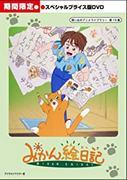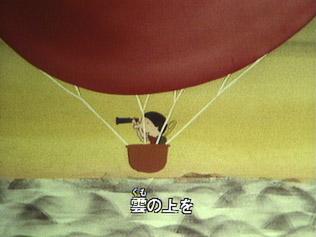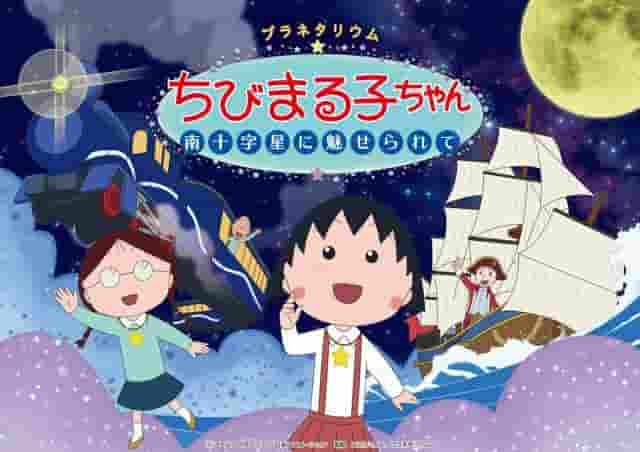The Farmer's Treasure: A moving story from the perspective of ordinary people and its evaluation

"Ohakusho no Takara": A film that marked the dawn of Japanese animation■Overview of the work"The Peasant's Treasure" (Ohyakushou no Takara) is a Japanese animated film released in 1936. This work was released in theaters and is short, with only one episode, but its content depicts horse-riding ideology and reflects the social situation at the time. It was produced by Yamaguchi Cinema and is based on an original anime. Detailed staff information such as the director and scriptwriter are unknown, but it is said that Yamaguchi Cinema and an unknown author were involved in the production. ■ Public InformationRelease date: 1936 Media: Theater Number of episodes: 1 ■Production informationProduced by: Yamaguchi Cinema Produced by: Unknown ■Explanation"Ohyakusho no Takara" is known as a video depicting horse-related ideas. This work depicts the importance of agriculture and horses in Japanese society at that time, and expresses the lives and work of farmers in the form of animation. Source: "History of Japanese Animation Films" by Yamaguchi Katsunori and Watanabe Yasushi, Planet, p. 219 ■ Main staffProduced by: Yamaguchi Cinema Produced by: Unknown ■ Background and significance of the workThe 1930s was a time of social instability in Japan, with the Showa Depression and the rise of militarism. Produced against this backdrop, "The Farmer's Treasure" aimed to bring stability and hope to the people by emphasizing the importance of agriculture and horses. In particular, it also plays an educational role in reminding people that agriculture is the foundation of Japan. Furthermore, this work marks the dawn of Japanese animation films and is a valuable resource for learning about the technology and methods of expression of the time. Its attempt to convey a social message through the new medium of animation had a major impact on the later development of Japanese animation. ■ Evaluation and influence of the work"Ohakusho no Takara" was highly praised when it was released, and was especially supported by organizations related to agriculture and horses. As the content of the film reflects the social situation of the time, it was also highly regarded for its educational value. In addition, this work occupies an important place in the history of Japanese animation films, and is a valuable resource for future researchers and animation enthusiasts. However, since detailed staff information for the work is unknown, many points remain unclear about the specific production process and technical details, which is one example of the fact that the Japanese animation industry at the time was still in its infancy. ■Details of the work"The Farmer's Treasure" is a work that depicts the daily lives of farmers and the importance of horses. The story is set in a rural village and depicts farmers using horses to carry out farm work. Horses play a central role in farm work and are portrayed as supporting the farmers' lives. The work also emphasizes the gratitude towards horses and the cherishing of the bond with horses. The animation technique makes full use of the technology available at the time to depict realistic movements and expressions. In particular, the horse movements and farm work scenes are depicted with meticulous attention to detail. This is a way to visually convey the theme of the work, equestrianism, and it succeeds in making a visual impact. ■Recommendations and viewing methods"Ohakusho no Takara" is an essential piece in the history of Japanese animation and is highly recommended for anyone interested in animation or film history, as well as being of great educational value to anyone interested in agriculture or equestrian-related fields. However, this work has become extremely valuable today, and there are limited ways to view it in general. It is sometimes screened at institutions and libraries specializing in Japanese animation films, so we recommend taking advantage of these opportunities to watch it. It is also introduced in books and papers as a resource for researchers and animation enthusiasts, so it is also useful to refer to such information. ■ Summary"Ohakusho no Takara" is a Japanese animated film released in 1936, known for its equestrian philosophy. The film reflects the social situation at the time and aims to bring stability and hope to the people by emphasizing the importance of agriculture and horses. It is also a work that marks the dawn of Japanese animation films, and is a valuable resource for learning about techniques and methods of expression. We have provided a detailed introduction to the content of the film, its reviews, and how to watch it, and we highly recommend it to anyone interested in the history of animation and film. |
>>: The appeal and reputation of kite flying: A complete account of the kite flying commotion
Recommend
It's really Children's Day. It's Tom Holland's birthday today.
"Little Spider" Tom Holland celebrates ...
Resident Evil film director to direct live-action adaptation of House of the Dead
Remember those "classic" Resident Evil ...
JoJo's Bizarre Adventure: Diamond is Unbreakable - A deep review of the fascinating story and characters
"JoJo's Bizarre Adventure: Diamond is Un...
Review of "Kaina of the Great Snow Sea": Digging deeper into the world of the star scholar
"Kaina of the Great Snow Sea: The Star Hunte...
The voice actors for the Japanese version of the live-action movie "Saint Seiya" have been announced. Which version do you prefer?
Produced by Hollywood, the live-action movie &quo...
The new animated movie poster of the game adaptation "Yo-kai Watch" is confirmed to be released on November 12
The classic anime and game multi-IP "Yo-kai ...
Despicable Me 4 released a new trailer in China on July 12
The highly anticipated animated film Despicable M...
It's been delayed for 10 years! One Piece voice actor Mayumi Tanaka is worried that she can't hold on any longer
It seems that Oda's One Piece is getting stro...
Nyakki! - A thorough review of the charming adventures of a cat-eared girl
"Nyakki!" - An animated series filled w...
Superman and Batman are both my idols! The latest Chinese trailer of "Shazam!"
The most "silly" hero in the DC univers...
The animated film "Kingdom of Gold and Kingdom of Water" is scheduled to be released on January 27, 2023
Adapted from the popular manga by Nao Iwamoto, wh...
The Witcher Season 2 may be suspended for the third time due to Henry Cavill's injury
According to the latest report from The Sun, a lo...
The Little Mermaid live-action movie new trailer and stills Ariel is chased by a shark
Recently, Disney released a new TV trailer for th...
It is reported that the new movie version of "Detective Conan" will be released on April 17, and Akai Shuichi will become the main star
Today (November 29), some netizens revealed that ...
Official response to Kadokawa's lawsuit against fans of "Undead King" for leaking spoilers in texts, no restrictions on fan activities
On October 30, Kadokawa Publishing announced that...









